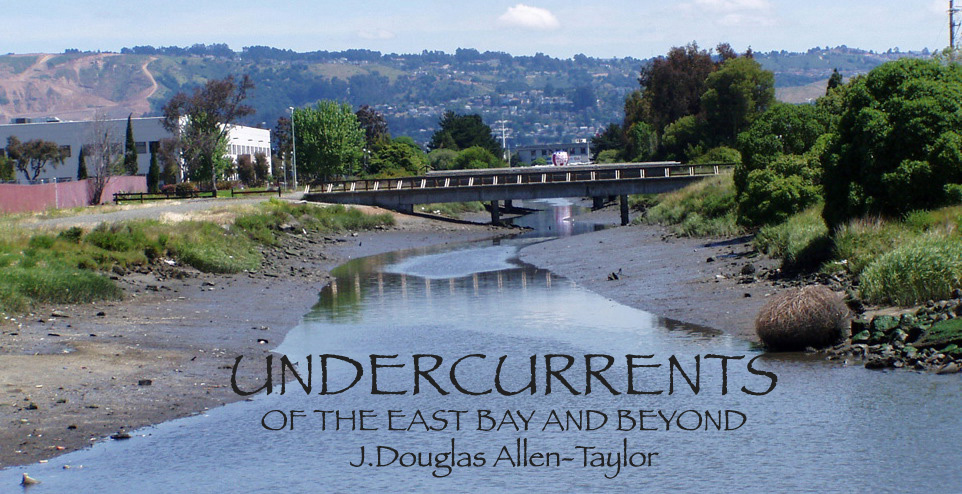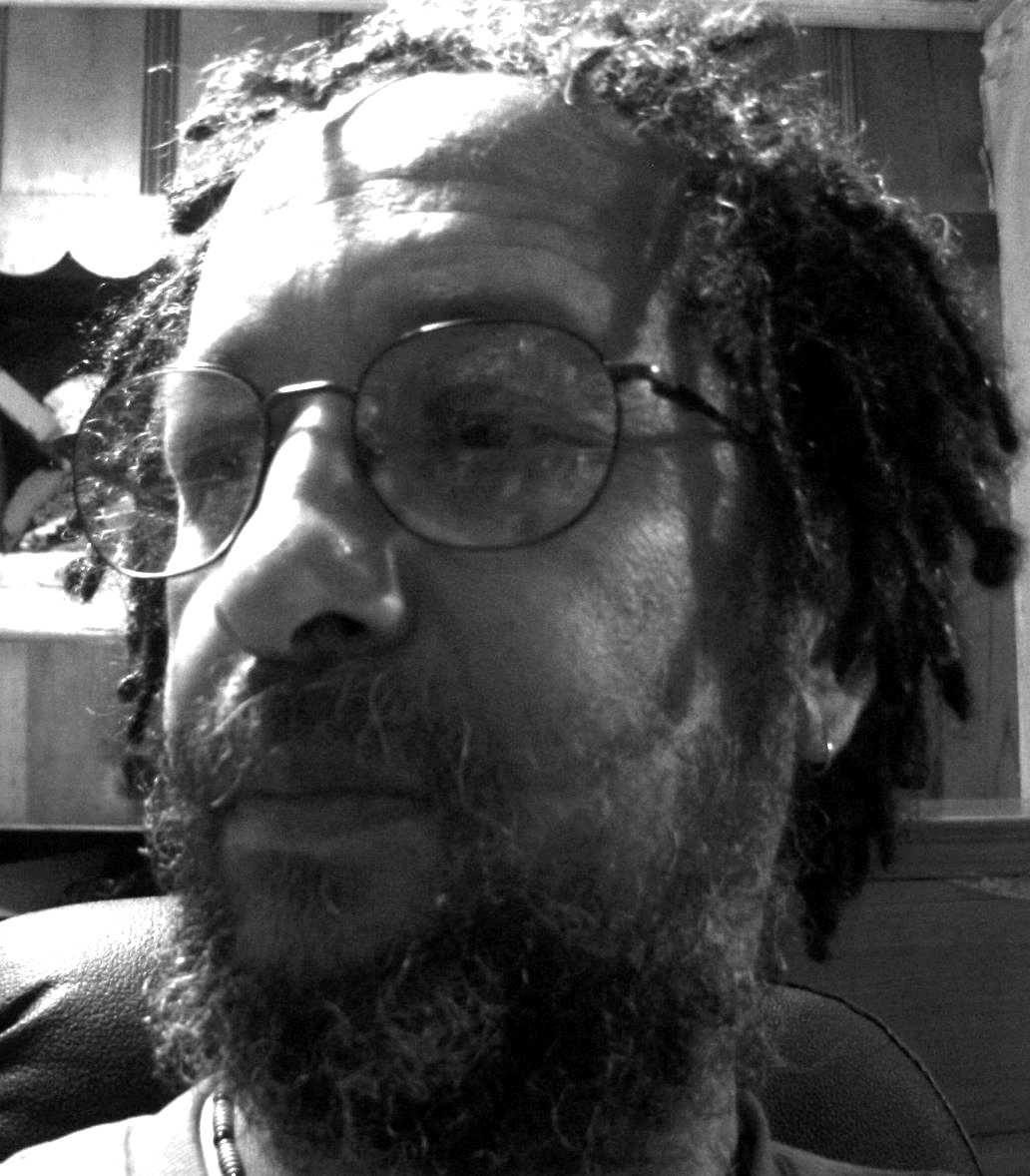

ROLLING UP OUR SLEEVES
 Driving home on Tuesday evening, the 1st, I passed
one of the officially-sanctioned National Night Out Events, this one sponsored by
the East Bay Dragons (African-American) Motorcycle Club, who had already begun to
cordon off the block at 88th and International on the side of their clubhouse. National
Night Out, from its website, is a campaign involving “citizens, law enforcement agencies,
civic groups, businesses, neighborhood organizations and local officials… Along with
the traditional display of outdoor lights and front porch vigils, cities, towns and
neighborhoods 'celebrate' NNO with a variety of events and activities such as block
parties, cookouts, [and] visits from local police and sheriff departments.”
Driving home on Tuesday evening, the 1st, I passed
one of the officially-sanctioned National Night Out Events, this one sponsored by
the East Bay Dragons (African-American) Motorcycle Club, who had already begun to
cordon off the block at 88th and International on the side of their clubhouse. National
Night Out, from its website, is a campaign involving “citizens, law enforcement agencies,
civic groups, businesses, neighborhood organizations and local officials… Along with
the traditional display of outdoor lights and front porch vigils, cities, towns and
neighborhoods 'celebrate' NNO with a variety of events and activities such as block
parties, cookouts, [and] visits from local police and sheriff departments.”
Ironic, isn’t it?
Readers with good memories will recall the last time the Dragons held a block party
and got a visit from the local police department. We wrote in this column in the
fall of 2005: “And on the Sunday before Labor Day, Oakland police shut down the Dragons’
annual 88th Avenue block party at 5 pm, and then conducted a sweep in which they
ordered the crowds of people off of International Boulevard in the vicinity of the
Dragons’ clubhouse. The Dragons do this every year on Labor Day weekend, blocking
off 88th between International and A Street and playing music and selling sodas and
barbecue. They have events for the kids as well as for teenagers, young adults, and
the older crowd. It’s one of the yearly highlights of our neighborhood. The crowds
are enormous, and club members handle both the security and the cleanup themselves.”
I never got an explanation from police or city officials why the Dragons’ Labor Day
event had to be shut down just prior to sundown. As is usually the case with the
Dragons’ events, there didn’t appear to be any violence or other problems, even though
88th and International is in the heart of Oakland’s killing zone, and one of the
roughest neighborhoods in the city. I only noted, then, that the closure happened
a couple of weeks after some trouble at a night-time dance sponsored by a couple
of black motorcycle clubs at the Kaiser Convention Center. The East Bay Dragons were
not part of the Kaiser Convention Center events, but, you know, Oakland police and
(some) Oakland city officials sometimes get their black guys confused…
So what changed in the 11 months between Labor Day, 2005 and National Night Out,
2006? Politics, maybe. And a murderous, bloody year in Oakland that has left Oakland
officials suddenly begging the same community to “get involved” that it was earlier
ordering to “close down” and “get back.”
In the midst of what is becoming an all-too-typically horrific period in which five
were shot and three were slain over last weekend, Mayor Jerry Brown took time out
from his Attorney General campaign duties to tour the 12th and Peralta streets neighborhood
where 57 year old Clinnetta Simril had been shot in the head and placed on life support.
Or maybe this was part of his Attorney General campaign duties. In any event, following
his West Oakland tour, Mr. Brown told Oakland Tribune reporters "I saw
a number of kids hanging around, (up) to no good."
It would be interesting to learn from Mr. Brown what criteria he used to come to
that particular conclusion.
Mr. Brown, after all, has a history of making accusations against citizens (unnamed
and therefore unable to defend themselves) so that the mayor can make a political
point.
In 2003, when he was trying to take over the Oakland-owned Malonga Casquelord Center
(then called the Alice Arts Center) for his private, non-profit Oakland School For
The Arts, Mr. Brown tried to justify the takeover by making accusations against some
men who the mayor said were “hanging out” around the Arts Center. Both the San
Francisco Chronicle and the Berkeley Daily Planet quoted Mr. Brown as
saying at the time, “They’ve had people hanging out there. When you have young children
taking dance classes, you have to be careful about the people you have running around
there. You can make an argument they are not compatible with dance studios and kids.”
Why were these people “hanging out” in front of the Arts School? Well, they were
tenants living in SRO’s on the top floor of the Malonga Casquelord Center, many of
whom were also artists who participated in dance companies located at the center.
Many of these Alice Arts Center tenants spent their afternoons at the sidewalk café
outside the center and the arts school, waiting for their rehearsals or dance classes
to begin. Were these tenants a danger to the Arts School students? Mr. Brown seemed
to be the only one who thought so, or, at least, pretended he thought so in order
to make a case that the tenants should be moved and his Arts School students should
stay. The African dance-based Malonga Casquelord folks, who were busy creating the
downtown sidewalk cultural atmosphere the mayor kept saying he wanted, were apparently
not exactly the type of culture he was talking about.
But back to Mr. Brown’s West Oakland Tour. The Tribune reported that the mayor
revealed he is working on the latest of his anti-crime strategies, this one to be
called “Operation Ceasefire,” the Tribune noting that “the details of which
[Mr. Brown] expects to release soon.” We’ll try to be patient.
The Tribune went on to quote the mayor as saying, "There have been a
number of young people involved (in these shootings), occasionally hitting innocent
bystanders. ... There are a lot of kids that need a lot of upbringing and they aren't
getting it; it shows up as kids on street corners doing things they shouldn't."
The newspaper reported that Mr. Brown was not blaming the police for the upsurge
in Oakland’s violent crime, adding that the mayor noting that "It's tough, they
are working overtime, doing everything they can, and if anyone has a better idea,
the chief would (welcome) it.” A police spokesperson noted that "the community
has to roll up its sleeves and pitch in.”
And do what, exactly?
Several years ago, leaders of Oakland’s original, non-violent, parking lot sideshows
went to Oakland city officials and asked them to help set up legalized, sanctioned,
safe sideshow venues off the city streets. This was after Oakland police had driven
the original non-violent sideshows out of the parking lots and into the streets,
creating the sometimes-chaotic situation we have today. Oakland police officials
were initially interested in the idea, traveling to San Diego to study a similar
program in that city, and contacting a promoter who would help put the venues together.
City Councilmember Desley Brooks held a couple of meetings with police officials,
promoters, and sideshow participants to try to put the project together. But Mayor
Brown and City Council Public Safety Chair Larry Reid talked against the proposal,
and it was put on hold for several years. It was revived, again, by Councilmember
Brooks during the summer of 2005 debate over Mr. Brown’s “arrest the sideshow spectators”
ordinance, in which the Daily Planet reported that “some other councilmembers—Henry
Chang and newcomer Pat Kernighan, for example—went on record saying that any discussion
of stepping up penalties on sideshow participants should also include a discussion
of legal alternatives.”
A year has passed, and we’re still waiting.
Would setting up a legalized, sanctioned, off-street sideshow venue have prevented
the murderous events of Oakland, 2006? Probably not. But it would have opened an
important dialogue and started a partnership between East Oakland street youth, the
Oakland police, and city officials that could have been a valuable tool in the current
attempts to abate Oakland’s violence, much of which is centered among our youngsters.
And if the legalized sideshow idea was a bad and unworkable idea, rather than shooting
it down entirely, the police department, the mayor’s office, and other city officials
should have continued the meetings with the sideshow advocates, encouraging them,
and working together to come up with a better plan acceptable to both sides.
But a pattern emerges. Oakland citizens in some of the city’s toughest neighborhoods—the
East Bay Dragons with their 88th Avenue block parties or the original sideshow participants
with their proposal for a sanctioned, legalized sideshow venue—come up with plans
to address the problems in Oakland’s mean streets. The city shuts them down. And
then, months later, city officials complain that they cannot get citizens to “roll
up [their] sleeves and pitch in.”
Perhaps we would, if the city would only stop taking our shirts.